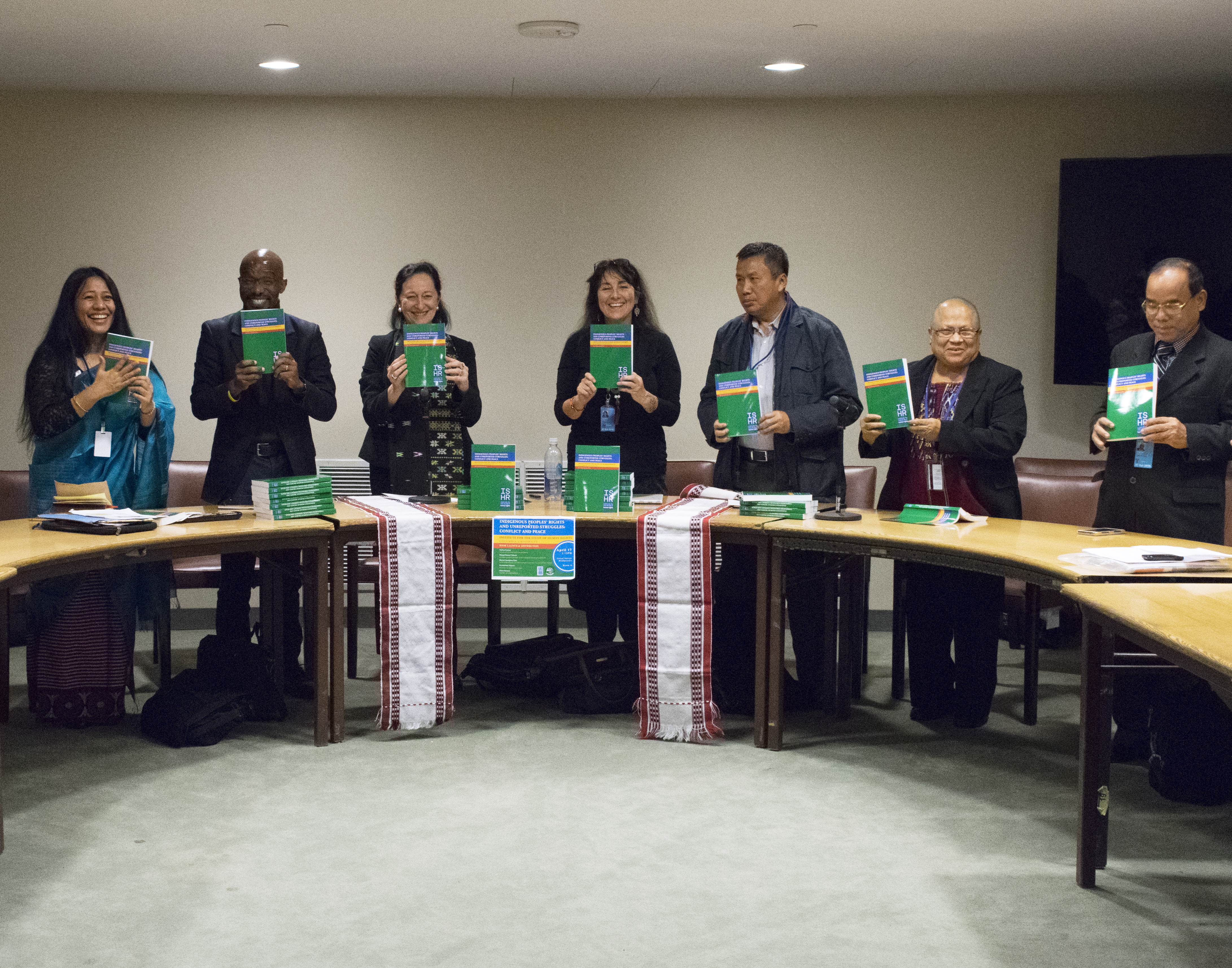
Indigenous Peoples’ Rights and Unreported Struggles
The Indigenous Peoples' Rights Program launched its newest publication - Indigenous Peoples’ Rights and Unreported Struggles: Conflict and Peace - during the 17th session of the UN Permanent Forum on Indigenous Issues. Attended by an international audience of more than 100 people, the event heard from a panel of distinguished experts: Albert Barume, Chairperson of the UN Expert Mechanism on the Rights of Indigenous Peoples; Victoria Tauli-Corpuz, UN Special Rapporteur on the Rights of Indigenous Peoples; Andrea Carmen, Executive Director of the International Indian Treaty Council; Mangal Kuma Chakma, Information and Publicity Secretary, PCJSS, Chittagong Hill Tracts, Bangladesh; Myrna Cunnigham Kain, President of the Fund for the Development of the Indigenous Peoples of Latin America and the Caribbean; and Binalakshmi Nepram, Founder of Control Arms Foundation of India and Visiting Scholar at ISHR. The panel was co-facilitated Binalakshmi Nepram and Elsa Stamatopoulou, editor of the book and Director of the Indigenous Peoples’ Rights Program of ISHR. A commentary on the book was also read out on behalf of the Chairperson of the UNPFII, Mariam Aboubakrine.
The book contains 12 essays and has been conceptualized to address broad issues of conflict and peace pertaining to Indigenous Peoples and their human rights. While some of the chapters are geographically specific, they each address major questions that are relevant to many situations and are examples of broader interest. Inspired by Indigenous Peoples’ unwavering efforts and initiatives towards the resolution of conflicts, the book asks questions that underlie the global peace agenda, yet provide the Indigenous angle, in addition to highlighting topics that are particular to the situation of Indigenous Peoples: the human rights standards applicable in situations of conflict, including the United Nations Declaration on the Rights of Indigenous Peoples; the issue of the responsibility to protect; violence against women; women’s contributions to peace; environmental violence; grassroots peace movements and their strategies; the negotiation and implementation of peace accords; structural violence; seeking conflict resolution through the courts; the potential and limits of shaming and sanctions; and a peace-mapping model for sustainable peace that includes Indigenous theories of peace.
The book contains a number of case studies with a geographical focus at the national level—Chile, Nicaragua, Colombia, Russia, India, Bangladesh, the Philippines—or at the regional level, namely Africa, the Great Lakes region and East Africa.
Columbia’s Institute for the Study of Human Rights is grateful to all the authors for their insightful reflections through these essays and has devoted the publication of this volume to the 10th anniversary of the UNDRIP. We hope that this book will make a small contribution to the continuing efforts of Indigenous Peoples for peace and justice, not least, through the support of the United Nations.





